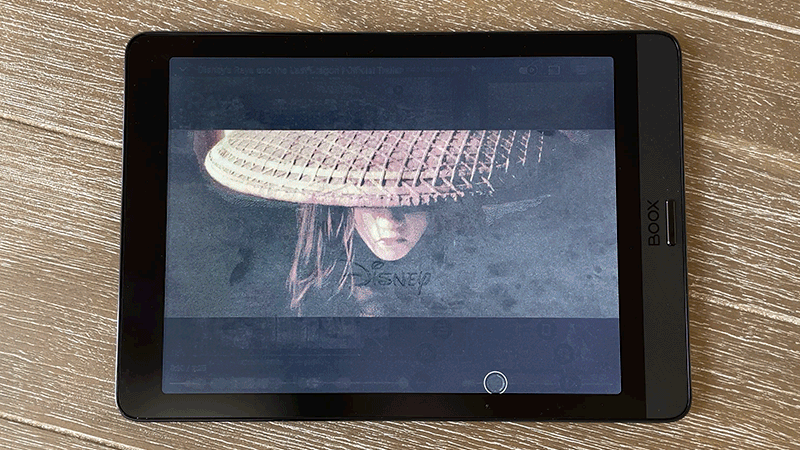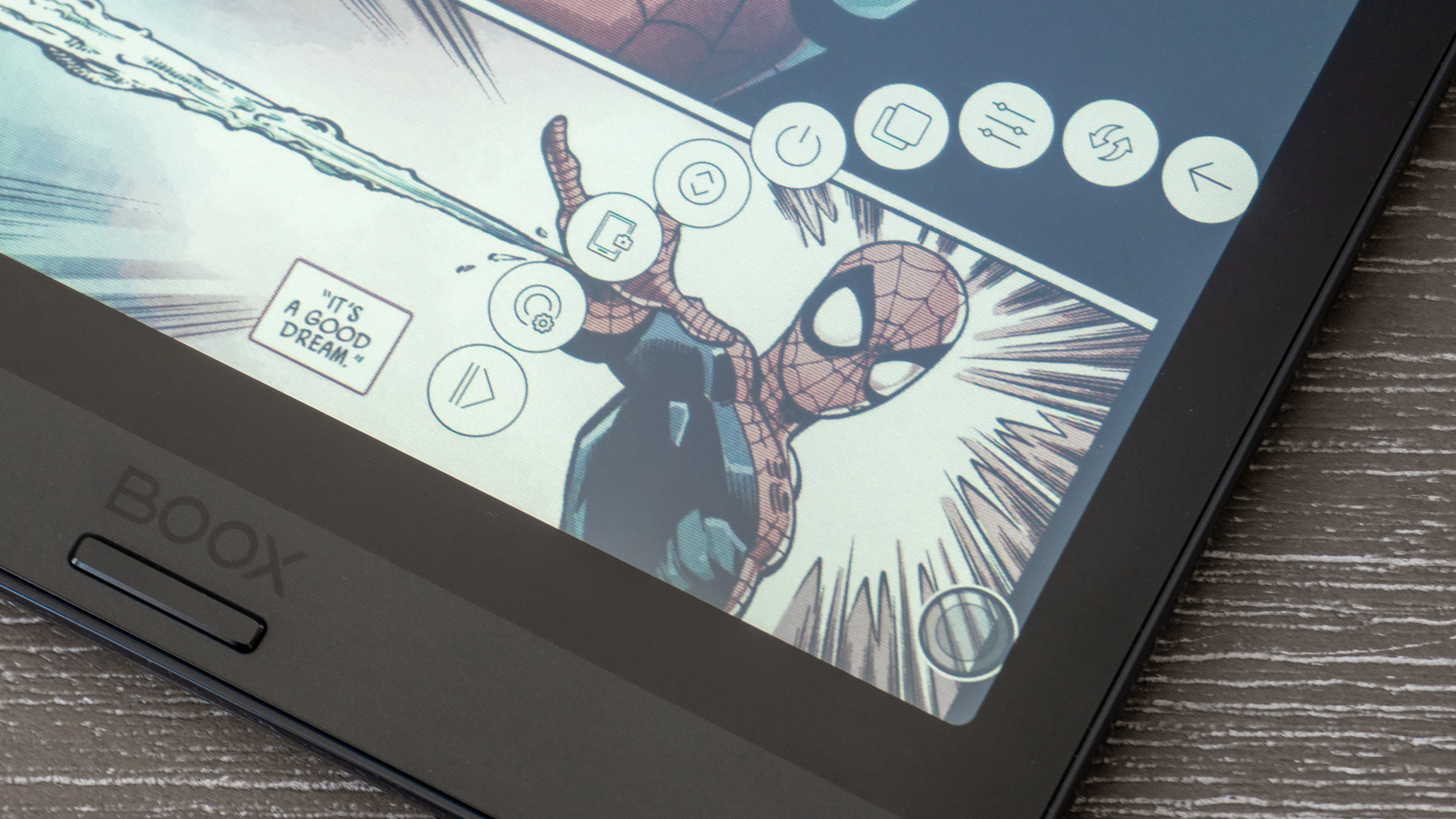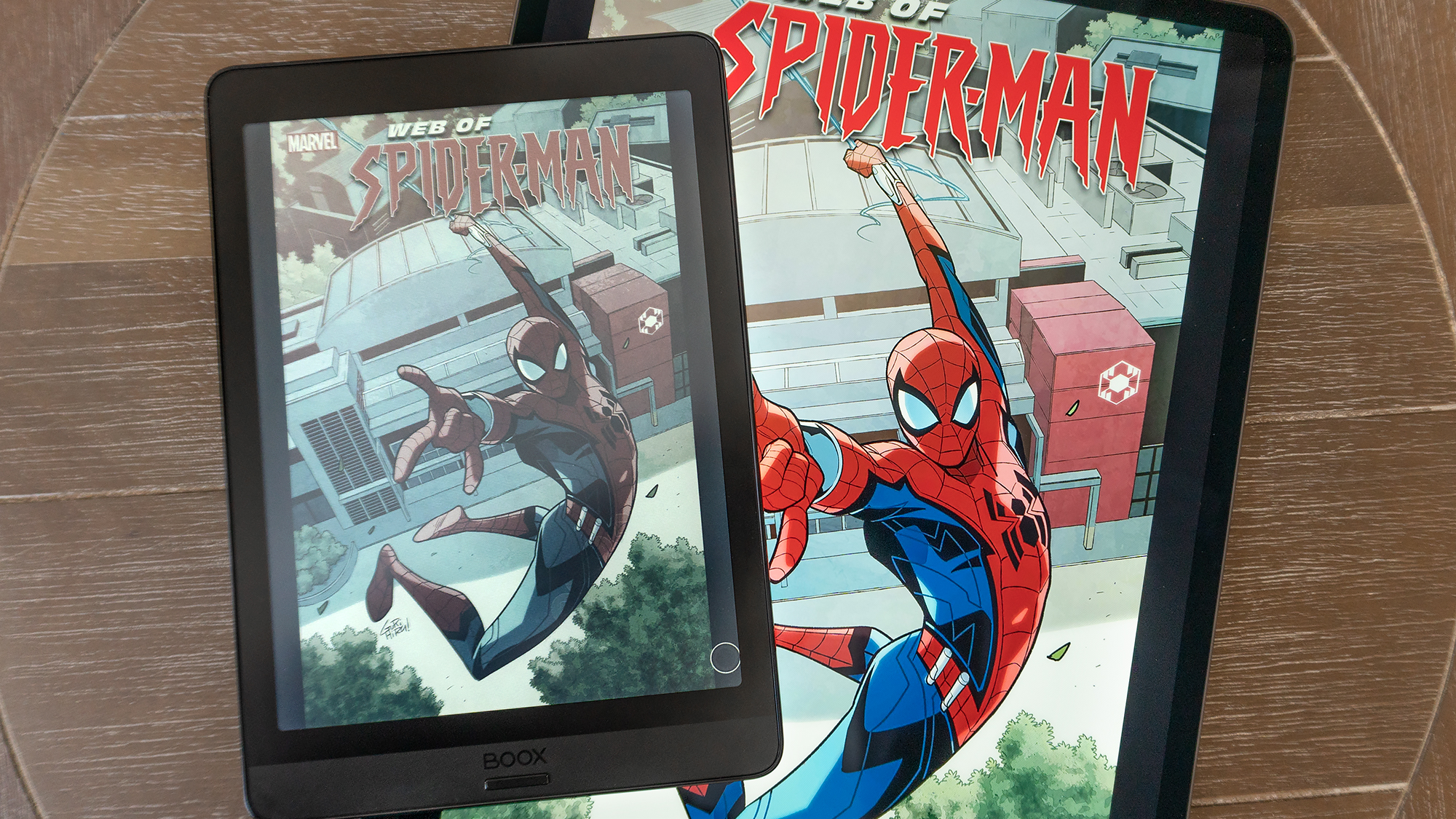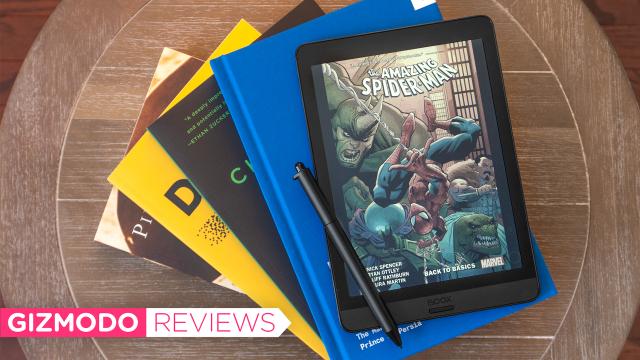If the PocketBook InkPad Colour was an attempt to bring the benefits of a tablet’s larger screen to e-readers so ebooks like comics and magazines are easier to read, the Boox Nova 3 Colour is an attempt to bring the benefits of an E Ink screen to tablets. The results are a more capable and powerful e-reader, but with a price tag that makes the Nova 3 Colour feel like a tablet with limited capabilities.
The Boox Nova 3 Colour tablet is the second device to use E Ink’s new 7.8-inch, second-generation Kaleido colour screen technology. PocketBook was the first, and its implementation of the new display was an attempt to improve the company’s first colour e-reader, the PocketBook Colour. That device’s 6-inch screen that made it hard to read image-rich documents like comic books that can’t be easily re-formatted for a smaller display. Boox’s use of the new Kaleido colour screen instead aspires to deliver a feature-rich tablet without the drawbacks of power-hungry display technologies like LCD or OLED. Unfortunately, the limitations of E Ink stymie those aspirations.

Boox Nova 3 Colour
WHAT IS IT?
An Android 10 tablet that trades LCD and OLED for E Ink's second generation colour e-paper displays.
PRICE
$US420 ($546)
LIKE
A Snapdragon 636 octa-core processor makes the Boox Nova 3 Colour feel like the fastest, most responsive e-reader available; Android 10 with the Google Play Store means you can install any ebook service or reader you want.
DISLIKE
The colour E Ink screen is often plagued by ghosting; the limitations of electronic paper also limits the tablet's ability to play games or be used to watch videos. The Nova 3 Colour's user interface could also benefit from more polish and usability improvements.
Unlike PocketBook’s Linux-based OS that runs on a dual-core 1 GHz processor, the Book Nova 3 Colour runs Android 10 (with a custom front-end) and is powered by a Snapdragon 636 octa-core processor, and the differences in CPU power are obvious. The PocketBook InkPad Colour still feels as snappy as any e-reader, but the Boox Nova 3 Colour easily outperforms it with documents that load in a snap (even massive PDFs), faster page turns, and a UI that never feels like it’s struggling to keep up with your screen taps.

Although both the PocketBook InkPad 3 and the Boox Nova 3 Colour are using the exact same screen from E Ink, which displays black and white text at 300 PPI while colour imagery is reduced to 100 PPI, the colours on the InkPad 3 look ever so slightly more accurate and saturated because the Nova 3 Colour features an extra screen layer to facilitate the use of a stylus.
Being able to use the Nova 3 Colour as an e-reader and an electronic notepad gives it a big advantage over the InkPad Colour, and a good justification of the device’s faster CPU and use of Android. The included stylus is nothing to write home about (see what I did there?), but unlike the Apple Pencil or the stylus Sony included with its e-note devices, it never needs to be charged. It’s also got eraser functionality built in, which is a plus, but there’s no integrated way to store the stylus, like a slot or a magnet on the edge. It just tags along (unless you buy Boox’s matching case or optional stylus tether) which is a good justification to swap out with many of the third-party active styluses already available for e-note devices.
[referenced id=”1324334″ url=”https://gizmodo.com.au/2020/08/the-remarkable-2-is-the-tablet-that-will-convince-you-to-go-paperless/” thumb=”https://gizmodo.com.au/wp-content/uploads/2020/08/27/bgjarpgmpxt8tklo8kso-300×169.jpg” title=”The reMarkable 2 Is the Tablet That Will Convince You to Go Paperless” excerpt=”Up until about two years ago I was convinced that electronic paper was an outdated technology that no one really needed. What completely changed my mind was the original reMarkable, an E Ink tablet that so perfectly recreated the pen on paper writing experience that I haven’t used a real…”]
Is the Boox Nova 3 Colour as good as the reMarkable 2 for note-taking? No, but it comes remarkably close (see what I did there too?). Writing on the Nova 3 Colour feels as responsive as it does on the reMarkable 2. The on-screen strokes rarely lag behind the stylus, and the frontlight and ability to write and doodle in colour are genuinely useful upgrades. The Nova 3 Colour’s file management, document syncing, and interface can’t quite compete with the reMarkable 2’s level of polish, but I was still extremely impressed with what Boox has delivered in terms of e-note capabilities.

The Nova 3 Colour runs Android 10 and you can easily get the Google Play Store working, which gives the device access to any app that can run on an Android tablet. For an e-reader that’s incredibly useful, because it means you can install the Amazon Kindle app, the Rakuten Kobo app, or other e-reader apps to get access to several well-stocked ebook stores. But trying other tablet apps is where the limits of E Ink technology can be frustrating. Simpler games like Solitaire work just fine on an E Ink screen, but trying to watch a video on YouTube, like the trailer for Disney’s Raya and the Last Dragon, is a real challenge for your eyes.
The Nova 3 Colour lets you customise how its colour E Ink screen behaves on an app by app basis, including how often it fully refreshes the screen, but action games and movies just aren’t an enjoyable experience no matter how the device is configured. The E Ink screen just isn’t fast enough, which makes the Nova 3 Colour impractical for anything other than reading books and taking notes.

The limits of E Ink screen technology aren’t the only thing holding the Nova 3 Colour back. The custom Android front-end it uses comes with its own challenges. It works, and is extensively customisable, including an optional on-screen shortcut button to quickly access oft-used functions, but there’s a lack of overall polish that’s especially apparent if you’ve used e-readers like the Kindle or the Kobo. You eventually learn to find your way around, but it’s rarely an intuitive or enjoyable experience.
A good example of this is the Nova 3 Colour’s home button, or what most users will assume is the home button. It instead functions like the Android back button, and doesn’t appear to be customisable. Through the UI there are several other ways to hop back to the tablet’s home screen, but if I see a single button on a tablet or an e-reader, my brain is already programmed to assume what it’s used for, and it’s little things like this that can make the Nova 3 Colour occasionally frustrating to use.
After using the Nova 3 Colour for a week, it feels like an experiment to see if E Ink’s Kaleido colour screen technology is ready to replace incumbent screen tech like LCD and OLED. The answer is no. To E Ink’s credit, the company has already demonstrated the third iteration of Kaleido, just six months after colour E Ink first became available to consumers, which is expected to arrive in devices later this year. With every version, E Ink has addressed the problems with its new screen technology, and here’s hoping that Kaleido’s LED frontlighting will eventually allow for colour temperature adjustments for reading at night. But it’s become apparent that we’re still quite a few iterations away from colour E Ink devices being on par with what black-and-white e-readers currently offer.

Unfortunately, a colour E Ink tablet with a low-power screen that’s easy on the eyes and viewable in direct sunlight doesn’t do enough to justify the Boox Nova 3 Colour’s $US420 ($546) price tag given what E Ink currently can’t do. That price makes the Nova 3 Colour about $US20 ($26) more expensive than the newest iPad Mini, which works with the original Apple Pencil for jotting notes or doodling. Even the excellent reMarkable 2 is $US20 ($26) cheaper than the Nova 3 Colour, and feels like a better choice for digital note-taking and reading ebooks, even without colour or a backlight.
There are lots of things I like about the Boox Nova 3 Colour. Having Android and the Google Play Store on an e-reader is fantastic, because it gives you endless choices on where to buy your e-books, and the older Nova 2 or black-and-white version of the Nova 3 are excellent e-note devices at their cheaper price points. But the Nova 3 Colour’s $US420 ($546) price tag only serves to make the $US329 ($428) PocketBook InkPad Colour more appealing if you’re desperate for a colour E Ink device.
